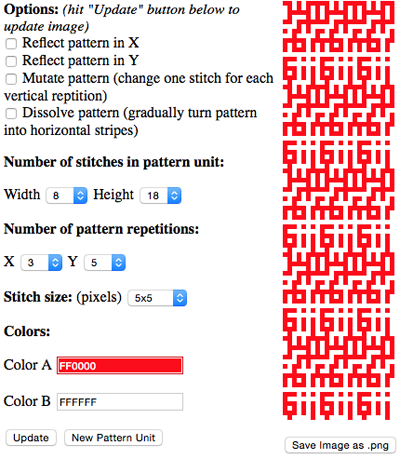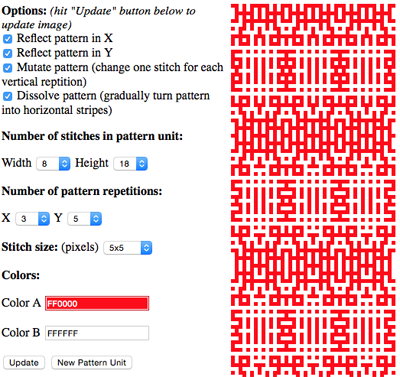Laura Kroegler shares an online generator for “mosaics”, unikatissima offers them for mazes and cellular automata. Representations of such patterns have cropped up in relation to hacked knitting machines and electronic downloads such as those seen in the Claire Williams blog, and in published information by Fabienne, who of late also has a Kickstarter project. Such patterns may be charted for hand knitting or for use on punch card machines once the size of the repeat is taken into consideration. Mirroring either vertically or horizontally can make the image far more interesting, but that has to be a consideration in planning if the stitch repeat has a constraint of a 24 stitch limit. A beginning unit 6 stitches wide will allow for the horizontal mirror to be repeated twice on the punchcard. The minimum punchcard length is 36 rows. The maximum scroll down to height in the Kroegler generator is 20, so for the least punching, an 18-row max would “fit”. The caveat here is that if the generated pattern is to be knit as DBJ or as a single bed slip stitch, those 18 rows need to be color separated accordingly. For the design to be charted out easily, it may be saved, and then in turn gridded in Photoshop or Gimp with the grid matching stitch size in the generated pattern preview (ie below note X and Y values are 5 X 5, so grid used would be 5 X 5 pixels as well).
After reviewing the tiled generated pattern, the image may be carefully captured from the screen and saved. I worked with an 8-stitch repeat for my tests. Below are screen grabs of the resulting patterns after some of the various options offered were tried. Mirroring this repeat horizontally makes it too wide for a punch card (16 X 2=32).
using a 5X5 grid after capturing a portion of another generated image, using a simple 8X8 repeat, outlining single repeats, thinking punchcard machine
checking the result tiled to predict possible knit “look”
If working with a 6 stitch repeat, horizontal mirroring becomes possible for punchcard machines, perhaps making things more interesting; the program can generate a single repeat as a png, and punching holes is a drag so maybe length remains on the short side in anticipation of the punching holes and color separating for knitting the motif as either DBJ or single bed slip stitch, so here goes: having the generated image produced so each stitch and row is represented by a single pixel allows one to work within any program preset to superimpose a 1X1 grid: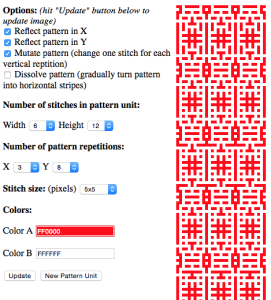
 my saved png, supposedly for an 8X12 repeat
my saved png, supposedly for an 8X12 repeat ![]() gridded in gimp, revealed as 11W X 23 H
gridded in gimp, revealed as 11W X 23 H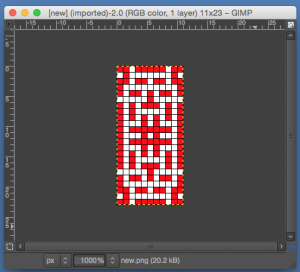
the trimmed repeat, eliminating double lines, 10 St W X 22 Rows H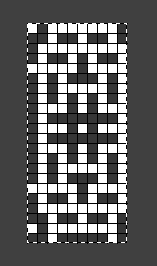
tiled, looking closer to original, 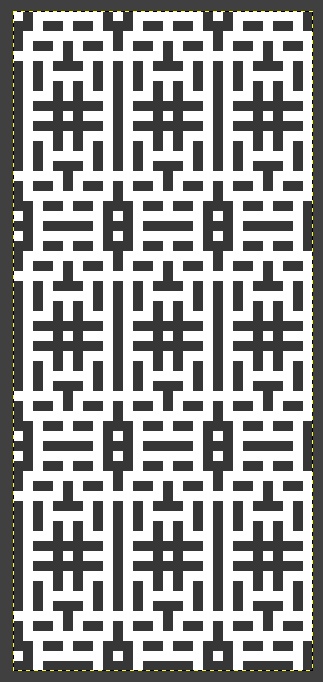 and then there is the knitting of it if one chooses to do so as single bed “floatless fair isle” as opposed to double bed dbj
and then there is the knitting of it if one chooses to do so as single bed “floatless fair isle” as opposed to double bed dbj
For the latest version of gimp for Mac OS, version history may be found at the gimp website, for Mac Yosemite and Mavericks’ latest information on version 2.8.14.
2020: latest Gimp update for Mac, my Mac OS: Mojave 10.14.6, now swatch testing on a 930 with image2track cable and software, which allows for easy use of larger repeats. Newer thoughts and observations: the maze can be generated using only black and white. If all boxes for options are checked as seen below, there will be shifts in the overall design. A small, working BMP may be saved for download, but only part of the overall repeat will be selected by the generator. Quitting the generator, and opening it once more entering the same options will generate a new image, so saving and naming each is a good habit to form 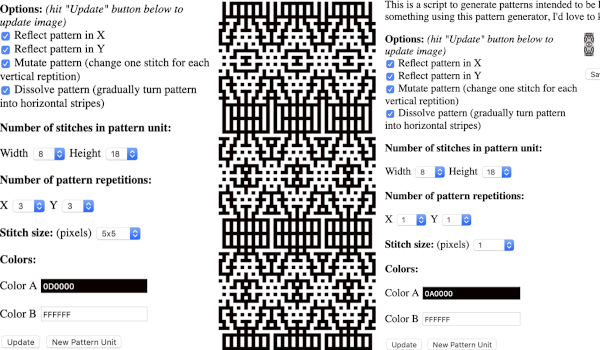 the BMP in Gimp, explored in two renditions, eliminating double lines
the BMP in Gimp, explored in two renditions, eliminating double lines 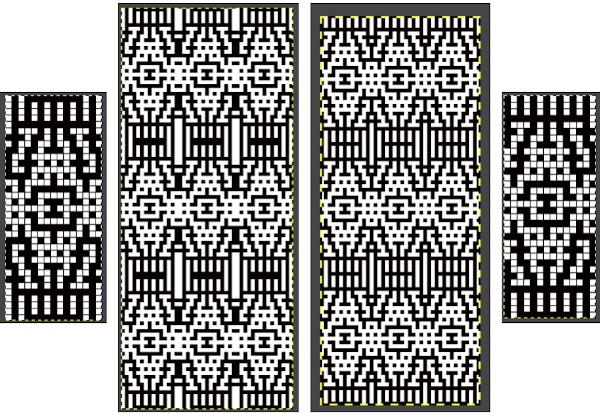 The proof of concept swatch for the version on the right and knit in tuck stitch
The proof of concept swatch for the version on the right and knit in tuck stitch 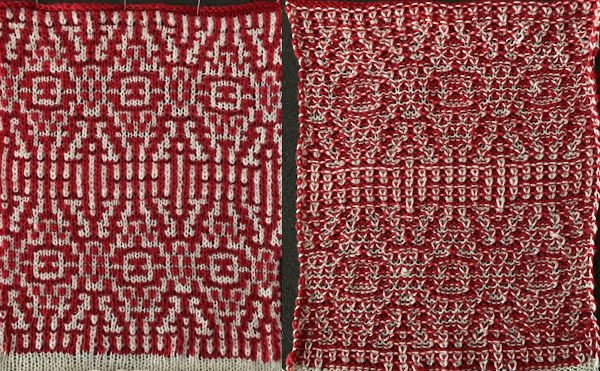 the double-length BMP ready for knitting, 14X68
the double-length BMP ready for knitting, 14X68![]()
One more, using different option selections  the BMP in Gimp, explored in two renditions, eliminating double lines
the BMP in Gimp, explored in two renditions, eliminating double lines  My latest process for the required color separation
My latest process for the required color separation
